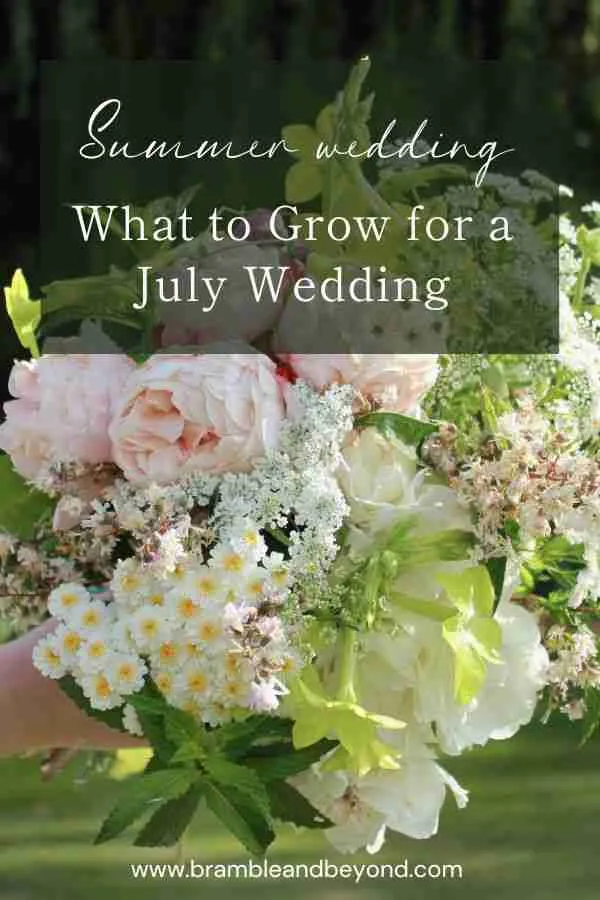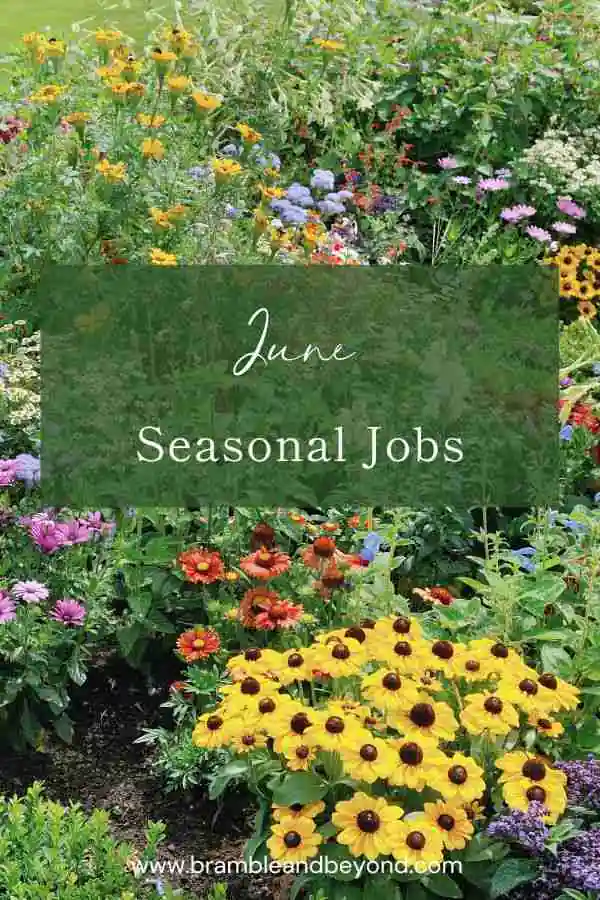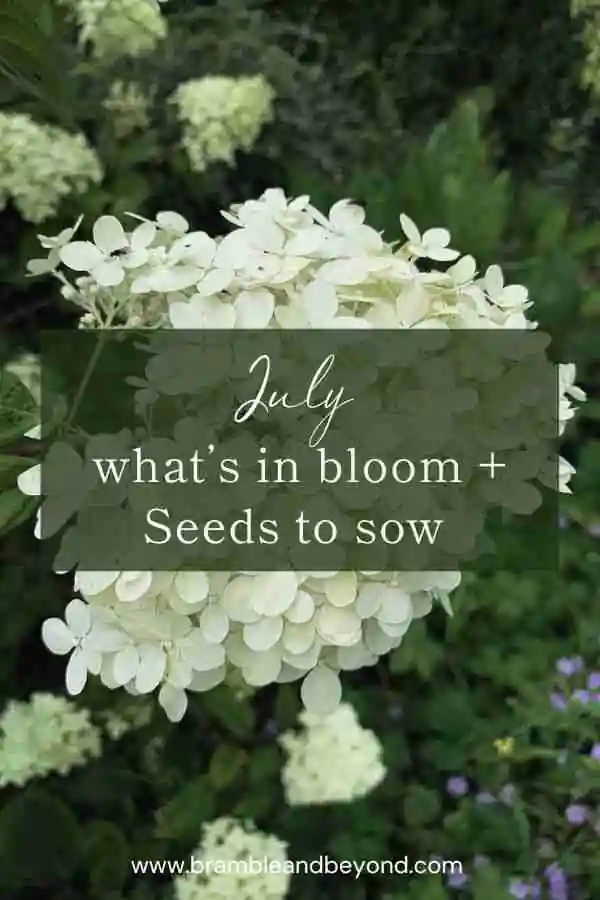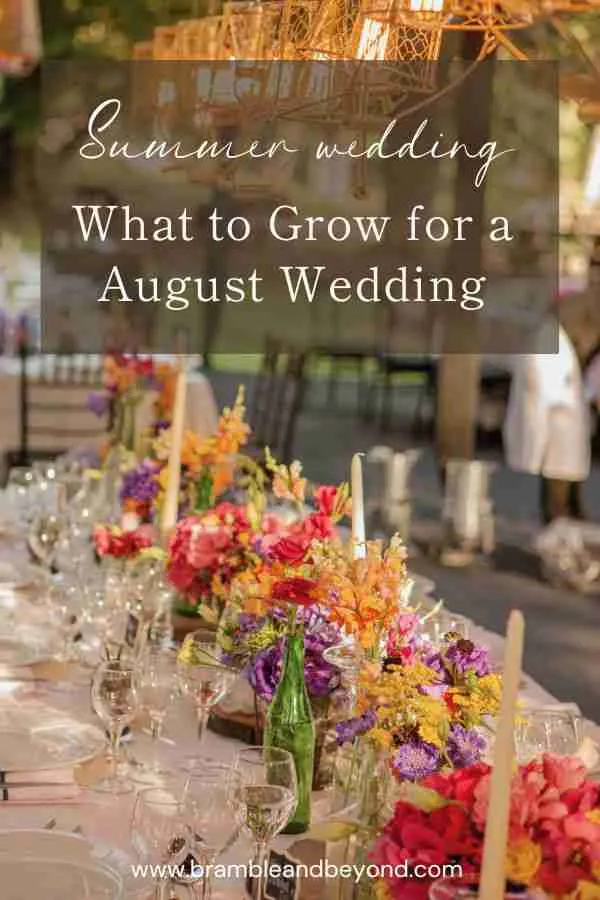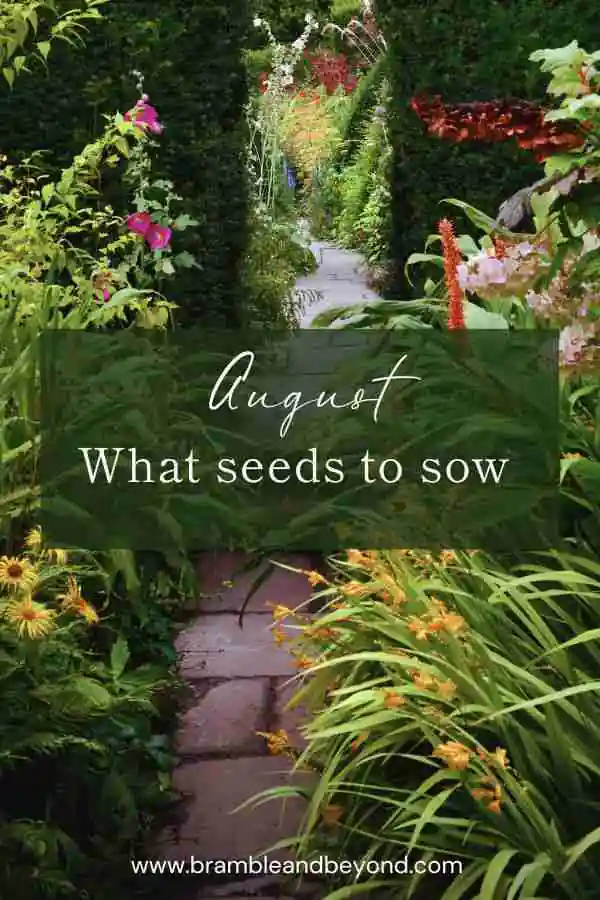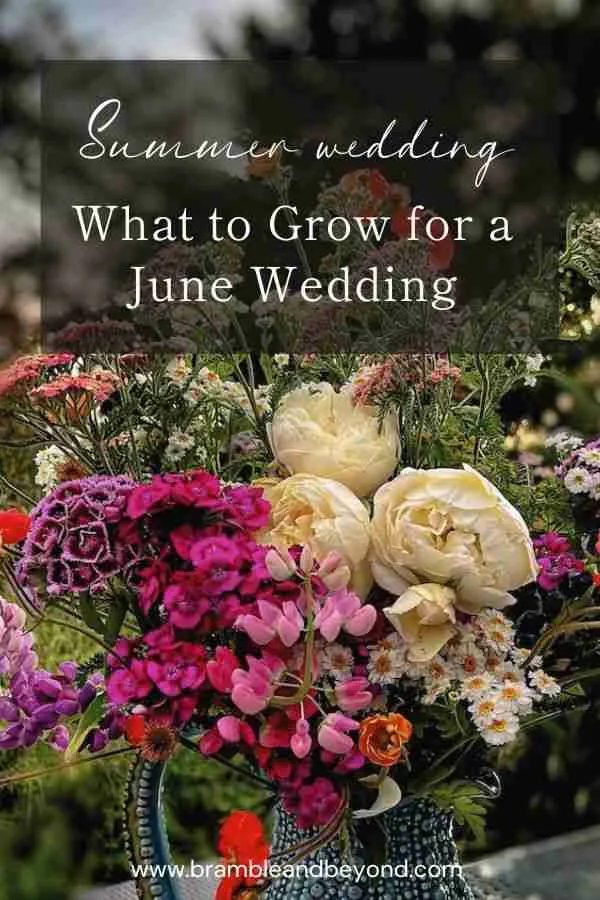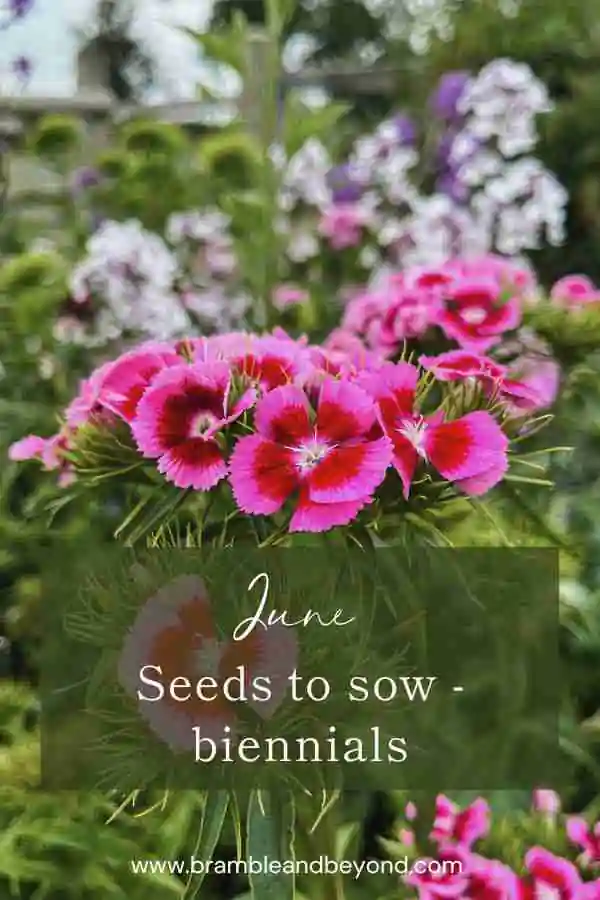Disclosure: This post may contain affiliate links, meaning I get commission if you decide to make a purchase through my links, at no cost to you. Please read my Affiliate Disclosure for more information.
Summer weddings are the perfect opportunity to celebrate the beauty of nature. So, what flowers should you plant for your lovely Summer Flower Wedding in July? Let’s dive in and explore the best blooms that you can grow sustainably.
Summer flower wedding growing guidelines
To make growing your own flowers for your wedding a breeze, let the season guide you towards the colours and plants that are available. In July, flowers start to take on softer and more muted tones as the summer heat sets in.
In this series of articles about sustainable seasonal flower gardening and wedding flower growing, I’m thrilled to share simple and beginner-friendly varieties that are sure to bloom and won’t take up too much space. However, let’s start with a few assumptions:
- I’ll assume you don’t have an established garden at your disposal, so my suggestions are based on you starting from scratch. Keep in mind that perennials and shrubs need time to establish and grow enough flowers. Planting a rose the year before and expecting it to provide an abundance of blooms for your wedding is simply unrealistic. However, if you have three or four rose plants that have been around for at least 3 years, you might be in business!
- Most of my suggestions are flowers that can be sown and bloom in a single season. However, this may require sowing them a year in advance to have the widest selection available.
- Make sure you have enough space in a dedicated garden bed to grow the flowers you need for your wedding. If you need help estimating the space required, check out my guide here.
- The quantities I provide in my recipe are based on creating 1 beautiful pedestal arrangement. If you need to calculate the number of flowers for other wedding arrangements, you can find more information here.
- The ‘Fancy’ adds extra texture, magic, or wow factor to your arrangements. It’s optional, but can really take your floral designs to the next level.
- Growing your own flowers means embracing imperfections. If you’re looking for perfectly straight roses, tulips, or ranunculus, it’s best to leave it to the florists. When you grow your own flowers, a little unruliness, some might say rustic charm, is part of the beauty. Embrace it, and you’ll have stunning and charming floral arrangements.
Keep in mind that you can only cut the flowers that are in bloom at the time of your wedding. Simply wishing for peonies or roses to bloom won’t make it happen. While you can help seeds and bulbs along by controlling the temperature, it’s an advanced gardening technique that requires more equipment. So, keep that in mind as you plan your sustainable Summer Flower Wedding garden.
Flowers to grow for a July wedding
As a general rule, flowers that bloom in July are best for a summer wedding. You are in the peak of the growing season, so anything should go at this time of the year. You won’t be short of ideas for your wedding. Take a look at the table below to see which flowers are at their best in July.
| Name | Type | Flower Form | Sow |
|---|---|---|---|
| Agrostemma (Corn cockle) | Annual | Filler | Mar – May |
| Amaranthus (Love-Lies-Bleeding) | Annual | Filler | Mar – May |
| Ammi majus (Bishops flower) | Hardy Annual | Filler | Feb-Jun |
| Ammi visnaga (Queen Anes Lace) | Annual | Filler | Mar – May |
| Calendula (Marigolds) | Annual | Filler | Mar -May |
| Campanula (Canterbury Bells) | Biennial | Filler | Feb – June year before |
| Celosia (Cockscomb) | Annual | Filler | Feb – Mar |
| Centaurea cyanus (Cornflower) | Annual | Filler | Mar – May |
| Clarkia (Godetia) | Annual | Filler | Mar – April |
| Cosmos | Annual | Filler | Mar – May |
| Craspedia globosa (Billy Buttons, Drumsticks) | Annual | Filler | Mar – May |
| Cynoglossum amabile (Chinese Forget me not) | Hardy Annual | Filler | Sep – Oct year before |
| Gypsophila (Baby Breath) | Annual | Filler | Feb – April |
| Lathyrus odoratus (Sweet Pea) | Hardy Annual | Filler/Fancy | Mar – May |
| Lisianthus (Eustoma) | Hardy Annual | Filler | April – June |
| Malope | Annual | Filler | Feb – Apr |
| Nicotiana (Tobacco Plant) | Annual | Filler | Feb – Apr |
| Nigella | Hardy Annual | Filler | Mar – May |
| Orlaya (White Lace Flower) | Annual | Filler | Mar – May |
| Phlox drummondii grandiflora | Annual | Filler | Feb – May |
| Rudbeckia (Black-Eyed Susan, Coneflower) | Annual | Filler | Feb – Jun |
| Salvia (Sage) | Annual | Filler/ Foliage | Mar -May |
| Scabious | Annual | Filler | Jan – Apr |
| Tropaeolum majus (Nasturtium) | Annual | Filler | Mar – May |
| Antirrhinum (Snap Dragon) | Annual | Focal | Jan – Mar |
| Callistephus chinensis (China Aster) | Annual | Focal | Feb-Apr |
| Helianthus (Sunflower) | Annual | Focal | Mar – May |
| Larkspur | Hardy Annual | Focal | Mar – May |
| Matthiola incana (Stock) | Annual | Focal | Feb – Mar |
| Ranuculus | Corm | Focal | Oct -Nov year before |
| Zinnia | Hardy Annual | Hardy Annual | Mar – May |
| Basil | Annual | Foliage | Apr – May |
| Cerinthe Major (Honeywort) | Hardy Annual | Foliage | Mar – May |
| Daucus | Hardy Annual | Foliage | Mar – May |
| Dill | Annual | Foliage | Mar – Jul |
| Lepidium sativum (Greek Cress) | Annual | Foliage | May – Oct |
| Senecio cineraria (Dusty Miller) | Annual | Foliage | Feb – Apr |
| Geum, Achillea (Yarrow), Aquilegia (Granny’s Bonnet, Columbine), Alchemilla mollis (Ladies Mantle) | Perennial | Filler/Fancy | |
| Astrantia (Masterwort), Linaria (Toadflax), Lysimachia (loosestrife), Penstemon, Sanguisorba, Tanacetum parthenium (Feverfew), Mentha (Mint) | Perennial | Filler | |
| Echinacea (Coneflower), Eryngium (See Holly), Hydrangea, Iris, Rose, Verbascum | Shrub | Focal | |
| Physacorpus (NineBark), Brachiglotis, Cornus, Philadelphus | Shrub/Tree | Foliage |
Don’t worry about trying to grow every single type of flower. Instead, let’s focus on using a consistent recipe and incorporating 6 or 7 different varieties. This approach will help you create arrangements that are well-balanced and visually appealing. Aim for 1/3 of the flowers to be focal flowers, another 1/3 to be filler flowers, and the remaining 1/3 to be foliage. And if you feel like adding any extra decorative elements, go ahead and let your creativity shine!
Remember, each arrangement type can have the recipe tailored to work for the size and add variety. However, sticking to the same flowers and colours will create a cohesive look throughout the wedding, ensuring a consistent feel.
July wedding flower arrangement recipe
For a typical wedding with 100 guests, you will likely need the following arrangements along with the approximate number of flower stems needed.
| Arrangement | No. of Stems | No. of Arrangements | Total Stems |
|---|---|---|---|
| Jam-jar posies | 20 | 10 | 200 |
| Large jugs of flowers | 50 | 3 | 150 |
| Pedestal arrangement | 75 | 1 | 75 |
| Bride’s bouquet | 50 | 1 | 50 |
| Bridesmaids’ posies | 35 | 3 | 105 |
| Buttonholes | 5 | 5 | 25 |
Let’s take a pedestal arrangement as an example. Here’s a recipe for a lovely July wedding:
- Focal – 10 china aster, 5 sunflower, 10 snap dragon/larkspur
- Filler – 5 phlox/scabious, 10 cosmos/malope, 10 ammi majus
- Foliage – 5 tall branches of foliage, 10 cress/dill/sage, 10 cerinthe major
- Fancy – sweet pea tendrils (or the flowers themselves, if they happen to be in bloom)
You could also consider checking out the arrangement recipe suggestion for Late June or August as some of the flowers may be available for July.
This combination will provide you with the flexibility to create various colour schemes, as each flower offers multiple colour varieties to choose from.
China Aster
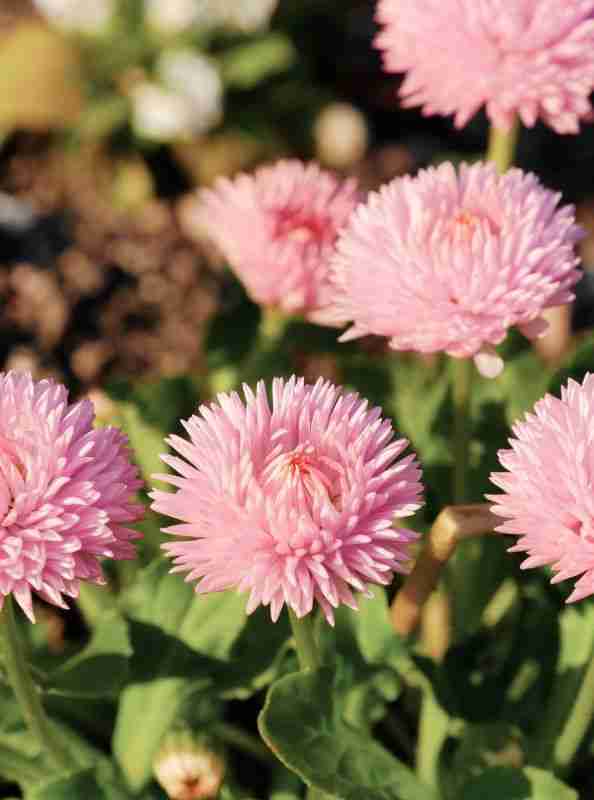
China aster is a lovely annual flower that is perfect for summer weddings. It features large and round flower heads on upright stems, with beautiful incurved petals in shades of purple, pink, white, and yellow. They are often mistaken for chrysanthemums.
With its great texture, china aster can be a wonderful focal flower in bouquets and arrangements. It is also easy to grow from seed, making it a popular choice. To enjoy its blooms in July, it should be sown in the early spring.
China aster is a multi-stem flower, typically producing about 3 stems per plant simultaneously.
Sunflower
Sunflower is a classic summer flower that adds a touch of charm to any summer wedding. While the traditional variety boasts bright yellow petals and large flower heads, you can now find sunflowers in a variety of colours, ranging from deep red to pale yellow with smaller, more useable flower heads. These vibrant sunflowers are sure to make your wedding truly memorable.
Growing sunflowers from seed is incredibly easy. Simply sow them in the spring, and you’ll have beautiful blooms in July. Sunflowers are single-stem flowers, so make sure to plant enough seeds to meet your desired number of flowers.
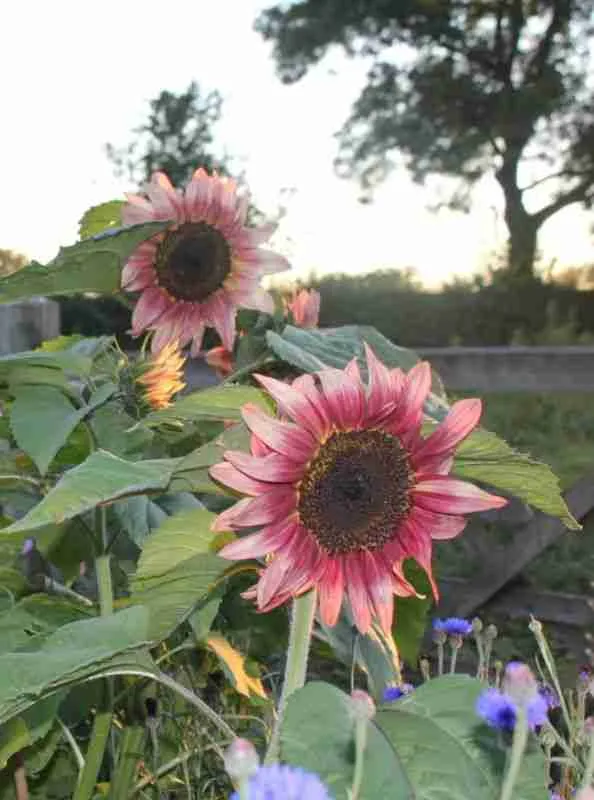
Once the sunflower is cut, I’ve noticed that it can produce multiple smaller flowers. However, please note that these additional flowers are not guaranteed, and their stems may be shorter and irregularly shaped. To keep these sunflowers upright and prevent them from being flattened by strong winds, it is advisable to provide substantial staking.
Snapdragon
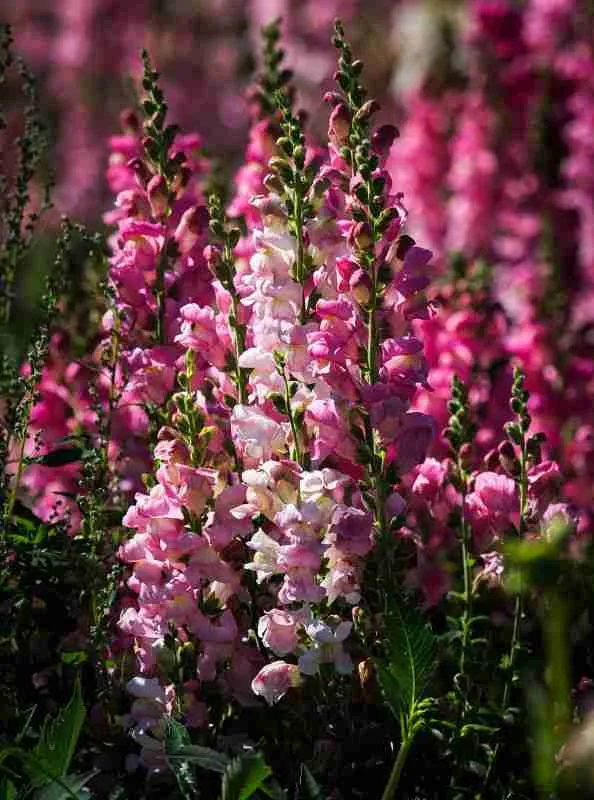
Snapdragon (Antirrhinum majus) is a beautiful hardy annual flower that is perfect for July weddings. With its tall, upright stems and spikes of lovely, delicate blossoms in a range of shades, from soft pastels to bold and bright, the flowers will surely add a unique touch to any bouquet or arrangement.
Growing Snapdragon from seed is easy and it should be sown in the autumn or early spring for flowers in July.
Snapdragon is a cut-and-come-again flower, but please keep in mind that you should only rely on getting 2-3 stems from a plant at any one time.
Phlox
Phlox comes in both perennial and annual varieties. The perennial variety usually flowers at the end of July and is highly fragrant. The annuals require a little more coaxing to produce tall, upright stems, but the effort is well worth it for the beautiful large, clustered flower heads that are produced in great profusion. They come in soft and bright shades of pink, purple, white, and yellow.
Phlox is a wonderful addition to any bouquet or arrangement, as it adds a delicate and romantic touch.
Growing phlox from seed is easy and it should be sown in the early spring for flowers in July.
Phlox is a multi-stem flower, and you should be able to get up to 3 stems from one plant.
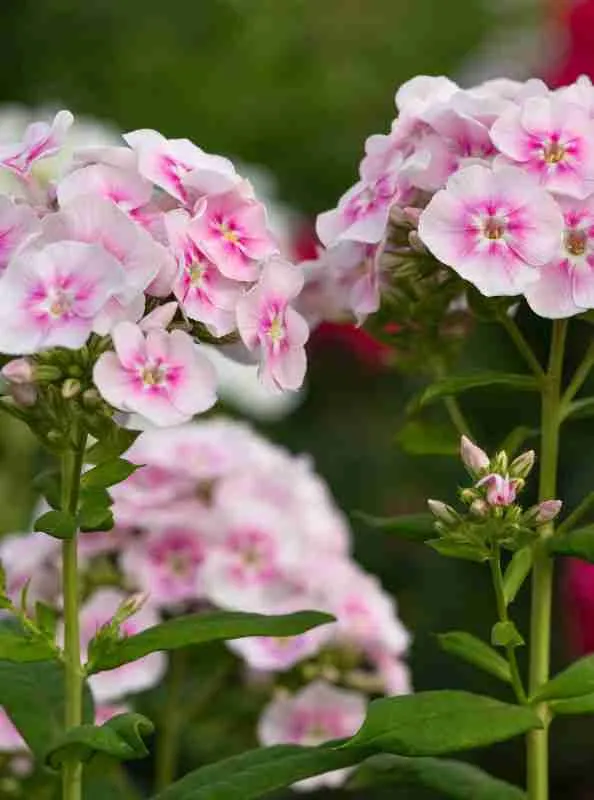
Scabiosa
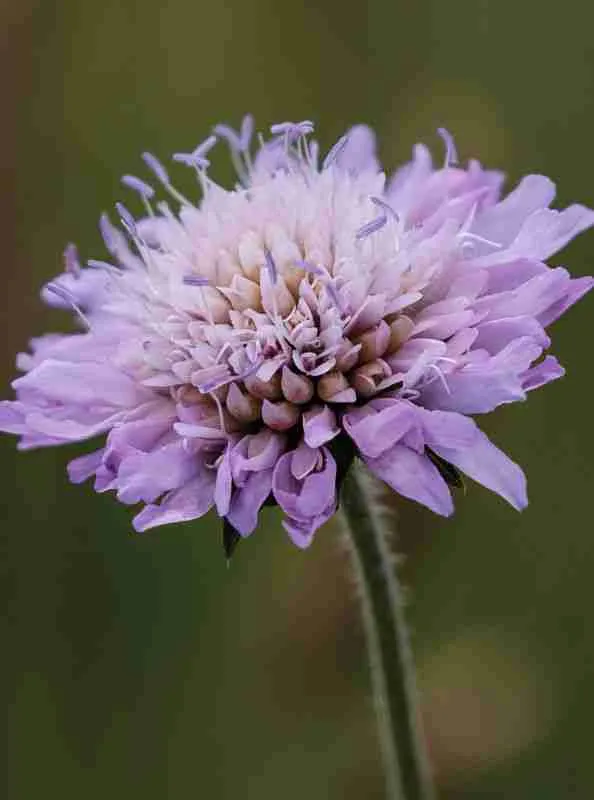
Scabiosa (Scabiosa atropurpurea) is a lovely choice for July weddings. It comes in both perennial and annual varieties, and its double pincushion flowers, about two inches in diameter, bloom in shades of pink, blue, white, and purple. These flowers grow on tall, strong stems, making them perfect as filler flowers.
Growing annual scabiosa from seed is a breeze. Simply sow the seeds in early spring and you’ll have beautiful flowers in July. This flower is cut-and-come-again, meaning you can harvest one stem at a time from each plant.
Scabiosa is not only beautiful, but it’s also great for attracting bees and other pollinators to your garden. So, if you’re planning an eco-friendly wedding, Scabious is an excellent choice.
Cosmos
Cosmos (Cosmos bipinnatus) is another fantastic option for July weddings. This annual flower features tall, upright stems and delicate, daisy-like flowers in shades of pink, white, purple, and orange.
Growing cosmos from seed is a breeze. Just sow the seeds in early spring, and you’ll have beautiful flowers in July. Similar to Scabiosa, Cosmos is a cut-and-come-again flower, allowing you to enjoy about 5 flowering stems from each plant.
Cosmos adds a light and airy feel to any bouquet or arrangement and is sure to impress your wedding guests.
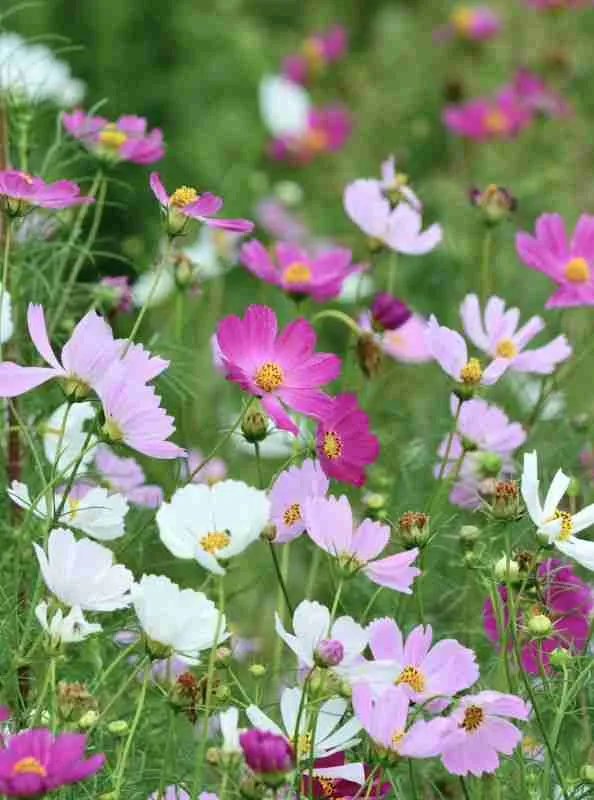
Larkspur
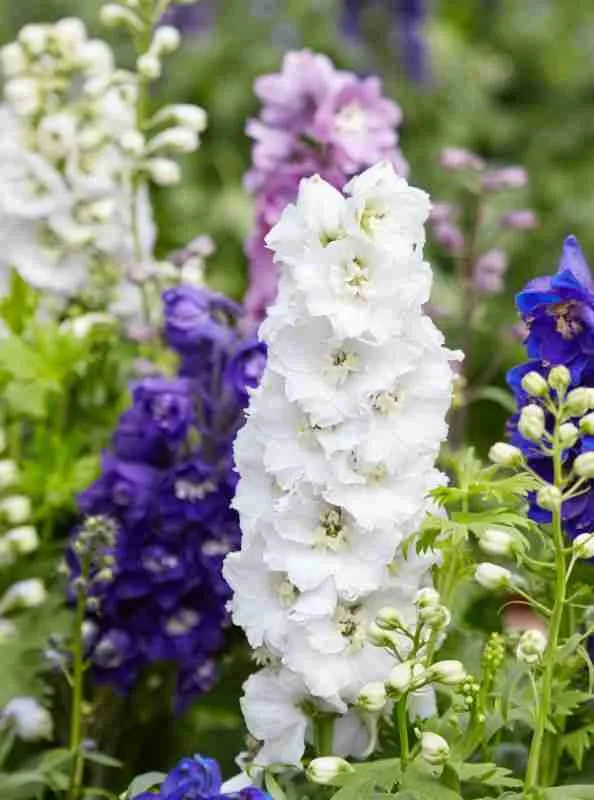
Larkspur is a wonderful choice for July weddings. It’s a hardy annual with tall stems and beautiful deep blue, pink, or white flowers.
I must admit, I find Larkspur a bit challenging to germinate. However, once they’ve sprouted, they’re quite easy to care for. To enjoy their lovely blooms in July, sow the seeds in early autumn or early spring.
If you want to encourage more blooms, don’t forget to trim the spent flowers. Just keep in mind that it’s considered a single-stem flower, so make sure you have enough stems for your arrangements.
Malope
Looking for a unique pop of colour in your July wedding bouquet? Look no further than Malope. This tender annual flower boasts clusters of large flowers in lovely shades of white and pink.
You’ll be delighted to know that Malope is a breeze to grow from seed, producing large plants. For July flowers, it’s best to sow the seeds in early spring. Unlike Larkspur, Malope is a multi-stem flower, so you can expect around 5 stems per plant at any given time.
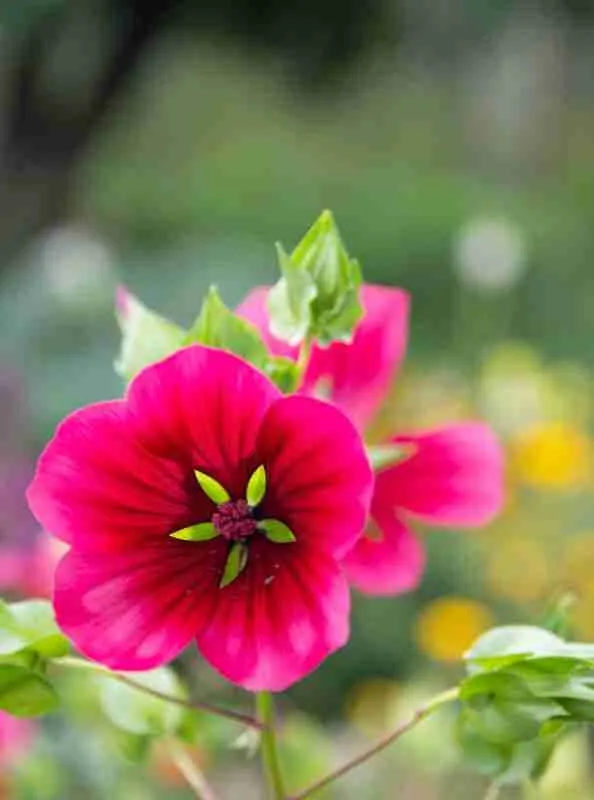
Ammi Majus

Ammi majus is a wonderful choice for a July wedding. It features lovely, lacy foliage and stunning, umbrella-shaped white flower heads that resemble cow parsley.
Growing ammi majus from seed is a breeze, and you can sow the seeds in the autumn or early spring to enjoy beautiful flowers in July. This plant produces multiple stems, providing you with around 6 stems per plant at any given time.
I personally find that this plant blooms throughout the entire summer and is a must-have in my cutting garden.
Cerinthe Major
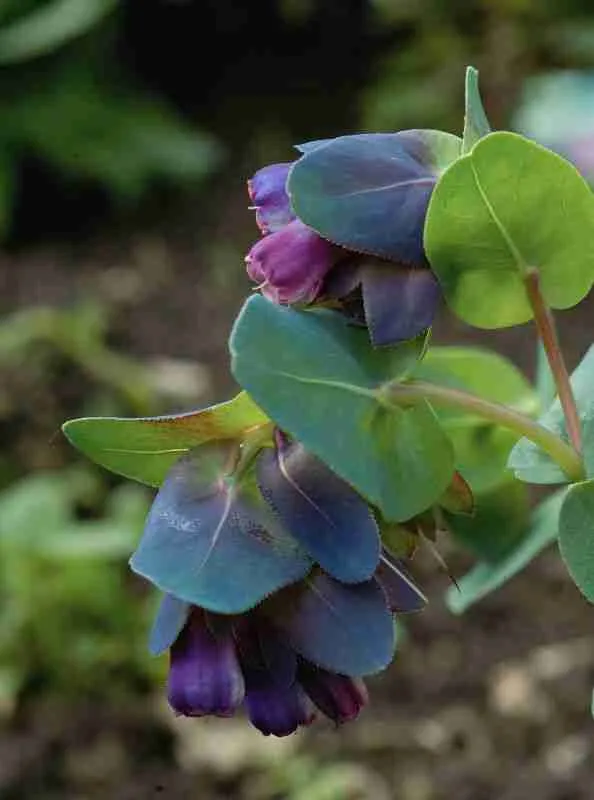
Cerinthe Major is an absolutely stunning annual flower that is perfect for adding a touch of elegance to your July wedding. I’ve classified it as foliage because of its unique blue-green leaves that gradually turn purple as they climb up the stems. And let’s not forget about the flowers – they are truly one-of-a-kind, with tubular shapes and a captivating dark purple-blue color. Despite their small and discreet size, they manage to stand out without overpowering other elements in your arrangement.
What makes Cerinthe Major even more wonderful is its ability to add texture and depth to any floral arrangement. It is a hardy annual that can be easily grown from seed, and for the best results, it should be sown in the previous Autumn to ensure beautiful blooms in July.
Greek Cress
Greek Cress is a fantastic foliage plant that florists absolutely adore, yet it is not often available for purchase. Luckily, it is incredibly easy to grow on your own. When it starts to produce tall stiff pale green stems, that’s when you know it’s going to seed – and that’s exactly what you want to use in your arrangement.
For a bold and dramatic effect, group bunches of Greek Cress together. If you prefer a more delicate and airy feel, simply scatter single stems throughout your arrangement.
If you find yourself lacking other foliage options for your wedding arrangements, Greek Cress is the perfect choice for a July wedding.
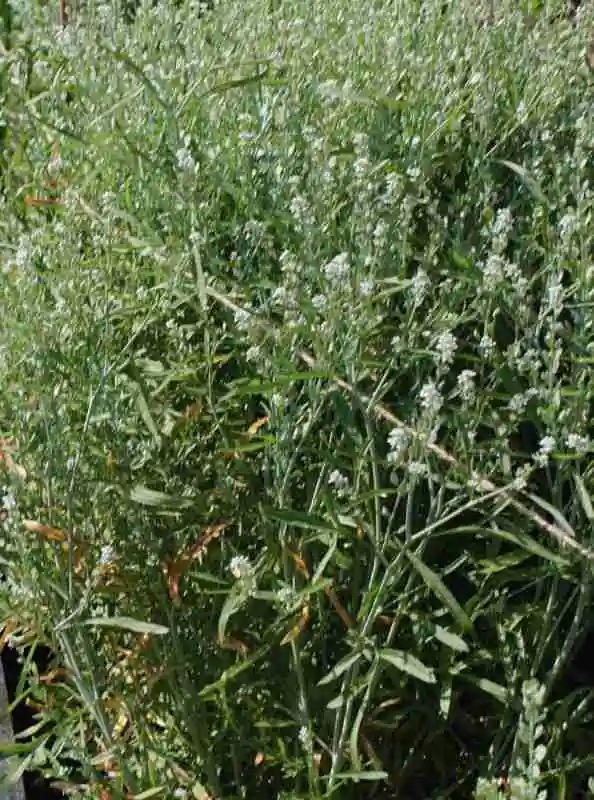
The seeds of Greek Cress can be planted close together, maximising the use of space without sacrificing the impact it brings to your arrangement. And the best part? You don’t need a large quantity of it to create a truly stunning effect.
Dill
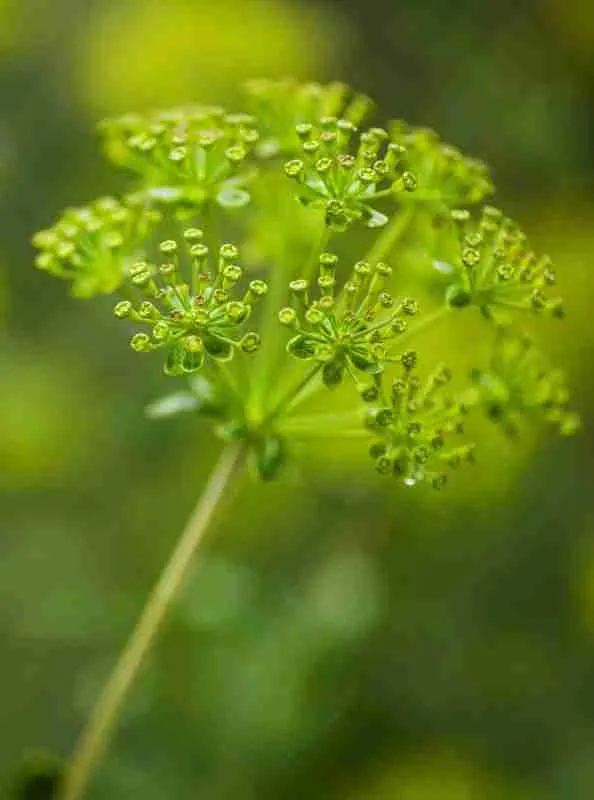
Dill is a wonderfully simple annual herb to grow, and adding a touch of dill to your arrangement can give it an extra dimension. With its delicate, feathery leaves and small yellow/green flowers, dill brings a soft and airy feel to floral arrangements.
Growing dill from seed is a breeze, and it’s best to sow in early spring for beautiful flowers in July. This multi-stem plant can produce up to 6 stems per plant, especially if you’re using the foliage rather than the flower heads.
Sweet Peas
Sweet Peas are a fantastic addition to any floral arrangement, offering a unique texture and a splash of colour. Even the Sweet Pea tendrils can add a wispy and distinctive look to your bouquet and arrangements. However, it’s important to note that they don’t last long once cut. While they are prolific flowerers, I would advise including focal and filler flowers to ensure a longer-lasting display. Nevertheless, they can still be used to create lovely small jam-jar arrangements.
Growing Sweet Peas from seed is a breeze, and it’s best to sow them in the autumn for flowers in July.
These flowers are cut-and-come-again, meaning you can continuously harvest about 5 stems per plant at any given time.
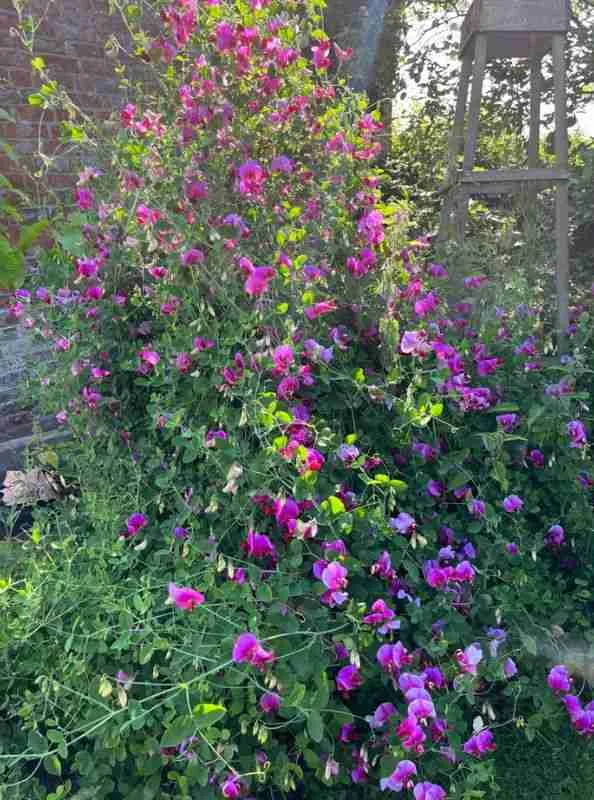
These flower examples are here to give you an idea for your mid summer wedding, but there are plenty of options to choose from. Sarah Raven is a great place to start looking for ideas. I love her site, it’s like flower inspiration overload! However, sometimes the quality of the seeds, tubers, and bulbs can be a bit hit-and-miss, and they can also be a bit pricey. On the other hand, I have been really impressed with the quality of the bulbs and tubers from Peter Nyssen, and if you’re looking to buy seeds I have seeds for all of the annuals and biennials mentioned above in my shop, but Chiltern Seeds is also a fantastic place to go.
The wonderful thing about a July wedding is that you can start growing hardy annuals the year before, so you can get a head start and create something truly special once spring arrives.

